I first came across Thenjiwe Nkosi’s work through the collaborative project; The Reading Room staged at the Goethe Institut in Johannesburg about two years ago. It would be another year until I engaged with her practice through a series of talks under the project; That’s what she said, which sought to bring together womxn artists around storytelling, creativity, Blackness and womxnhood. Because of these encounters, I read her work within the potent politics of the image —what is represented, what is hidden and why —particularly through the lens of power, agency, resistance and the fissures that lie between these.
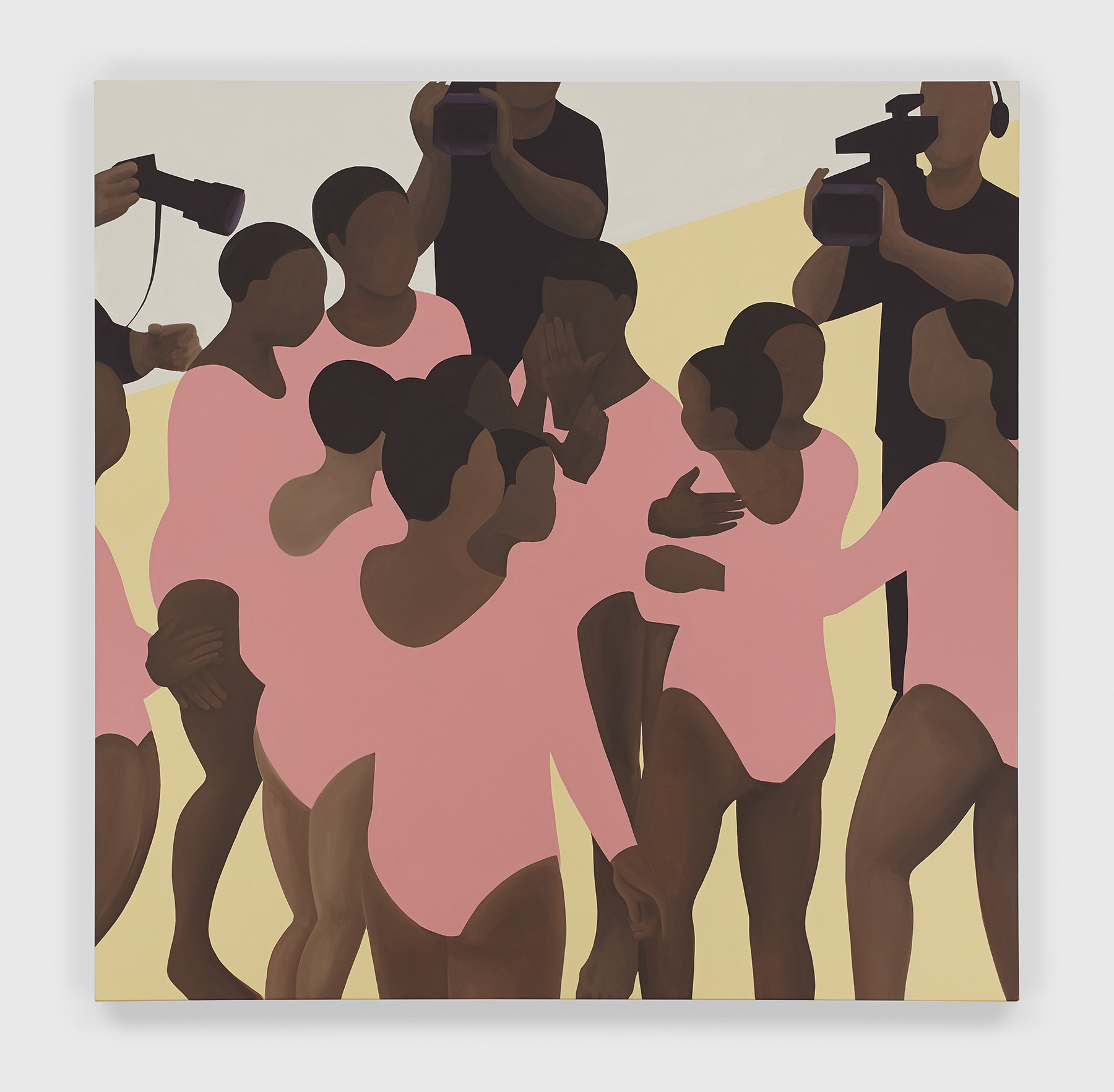
Team; 2020.
In her first solo exhibition with Stevenson Gallery —Gymnasium—Nkosi returns once again to the impossible questions of voice, power and agency through a series of oil paintings and video work. In this exhibition, the architectural is stripped down to its most elemental form; the line. Straight lines and sharp angles depicting the interior of a gymnasium exists alongside smoothly rising, and falling outlines of bodies in space. The gymnasium functions as a metaphor for how artists — particularly Black artists — navigate traditionally exclusionary and oppressive systems within the (art)world. In Team (2020), something important has just happened, possibly a fumble or maybe a victory; two figures are embracing, another’s hands are covering her eyes, the rest of the team is gathered. On the far left of the painting, we see a gesture, a woman mid-clap. All the while- the unrelenting gaze of the camera hovers above this moment. We get a sense of the heaviness that comes with looking and being looked at.
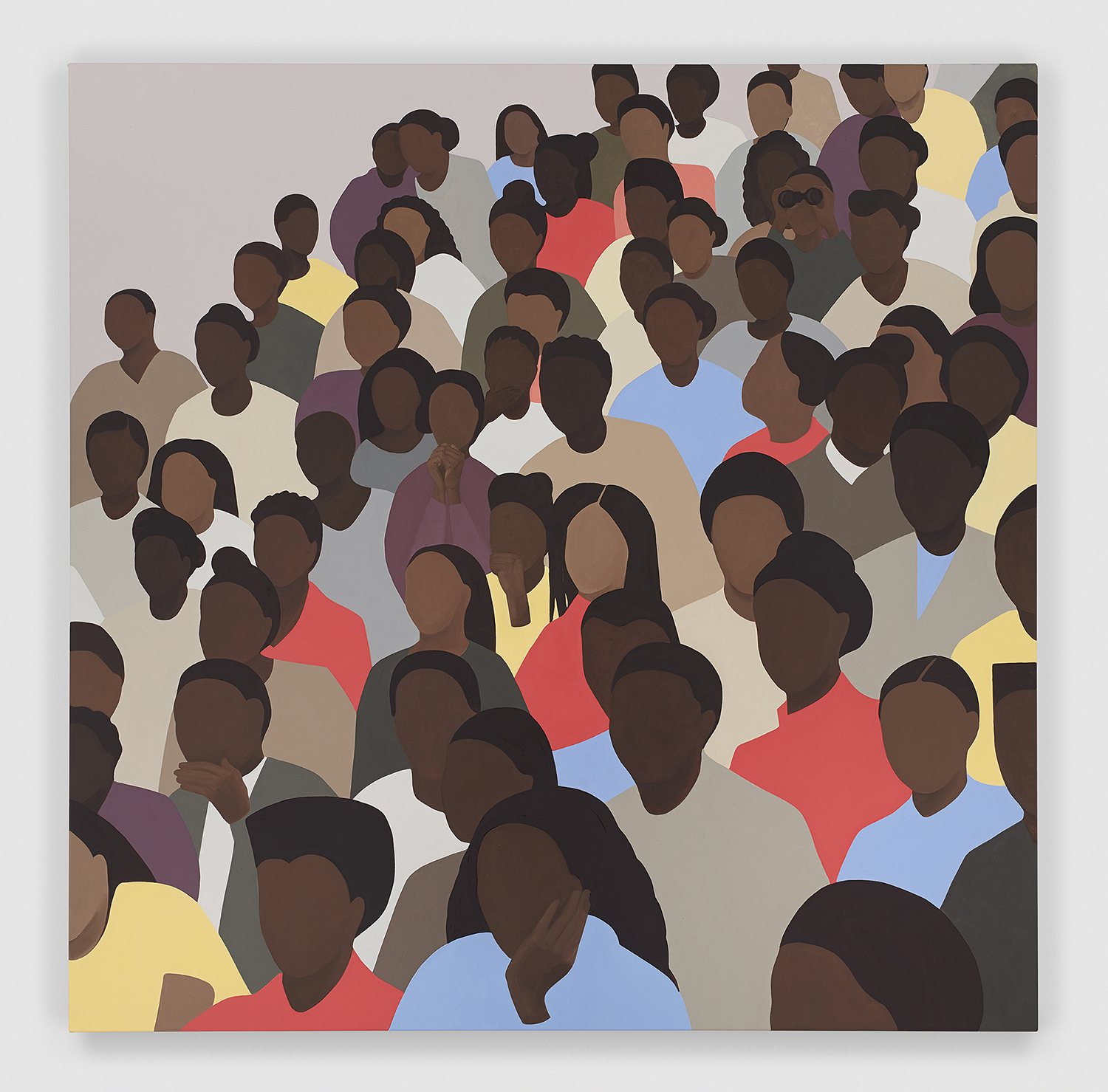
Audience; 2020.
In Audience (2020), the spectators are paying attention and waiting in anticipation for something to happen. Of course, looking is complex and sometimes self-contradictory; it is wrapped in pleasure, in desire but also in contempt and ownership…..and of course; vulnerability and visibility are constantly pulling towards and away from each other. In the same way as the gymnasium is an arena for the gymnast, so is the (art)world an arena for artists. Nkosi states; ‘The artist, like the gymnast, is witnessed and judged: trying, succeeding, failing.” In the six-minute video; Suspension (Sierra Brooks, Daisha Cannon, Luci Collins, Olivia Courtney, Naveen Daries …) 2020, Nkosi has compiled moments and near moments where young gymnasts stand or gesture in anticipation. The gestures arrest our attention and evoke our imagination; we imagine what will happen when the gymnast takes off; how will they twist? Will they land? Will they achieve the perfect score? We are looking and waiting.
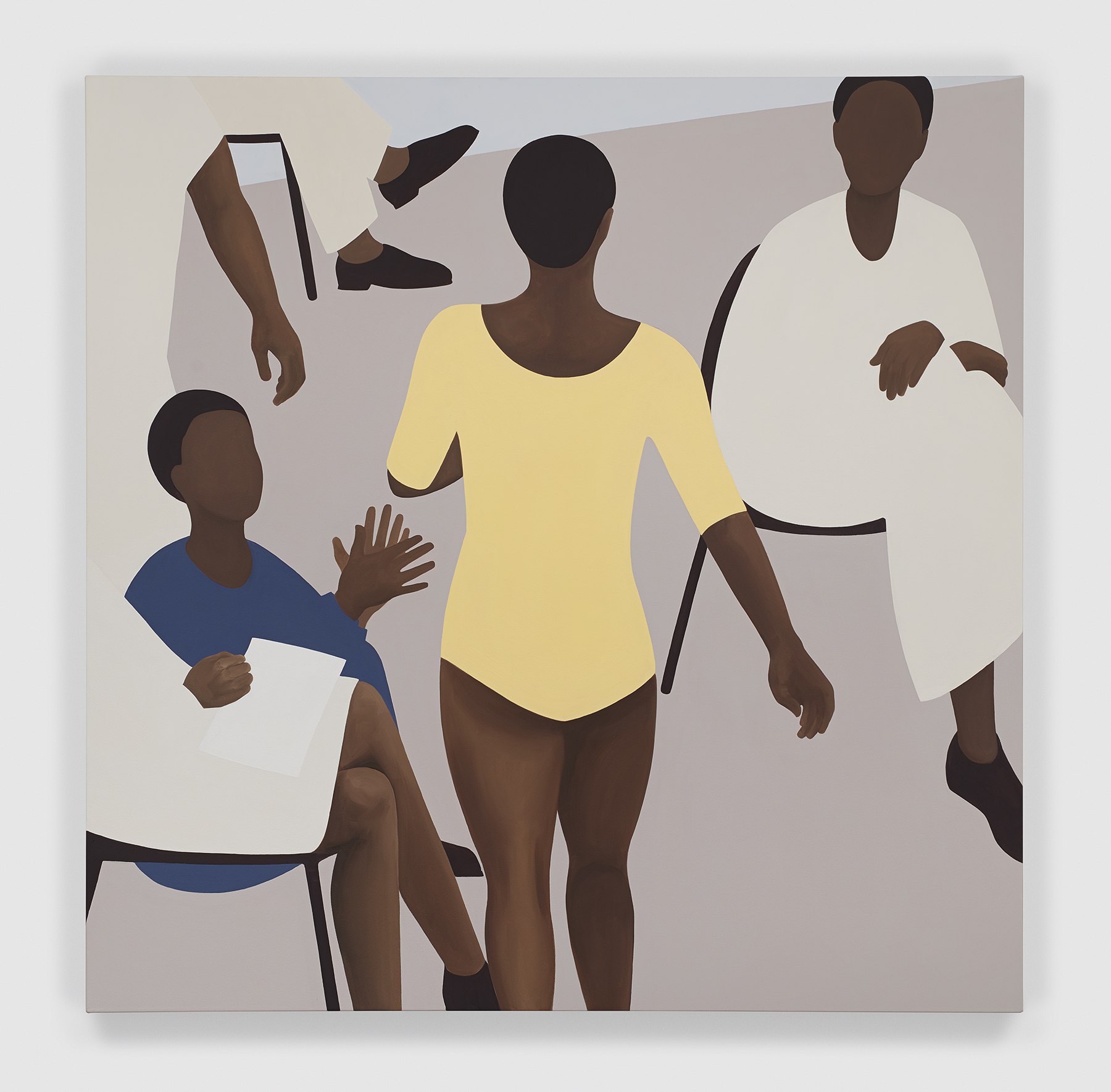
Although Nkosi draws inspiration from very specific narratives of how Black bodies navigate spaces of power (e.g. referencing the most decorated gymnast in the world; Simone Biles) she makes note that each of these figures can, in fact, be a stand-in for anyone who wishes to feel seen and who wishes to see themselves in these images. Unlike her previous portraits in the series Heroes, for instance, the gymnasts lack distinct defining features —the hero is once again “any person who can be admired for their courage and noble qualities”. The hero is the struggling artist for their courage, the hero is the art teacher in an under resourced school, the hero is the young artist who is told too many times; ‘you will never be like William Kentridge’. The hero is the gymnast stumbling in the arena whose face is marred with dust, blood and sweat (to borrow from Roosevelt). The hero is me. The hero is you.
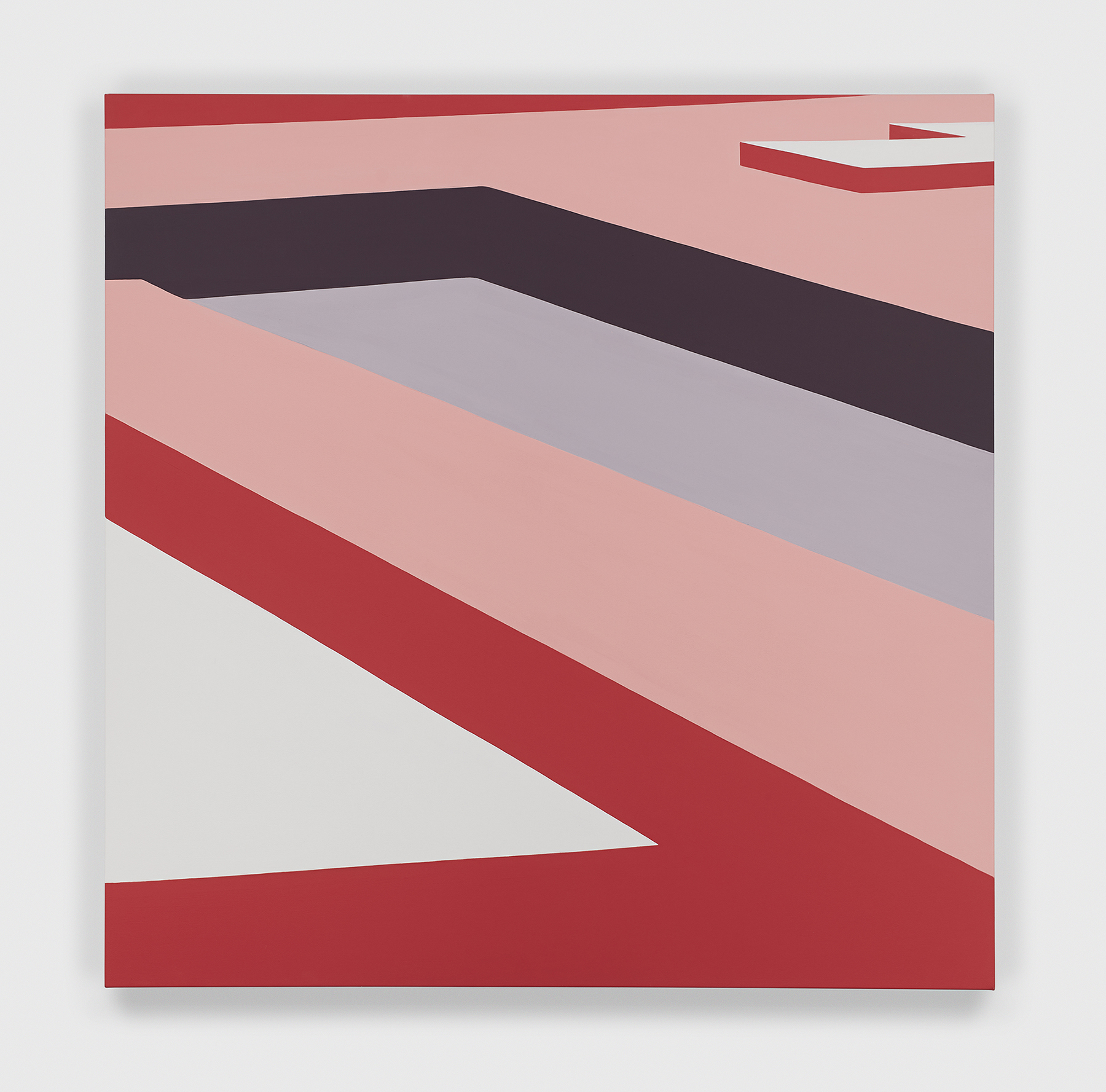
Spring Floor IV; 2020.
Going back to the notion of looking; in her text Looking for M— Queer Temporality, Black Political Possibility, and Poetry from the Future, American humanities academic Kara Keeling introduces us to looking in two senses:
“The first is sequential and aligns with a temporality in which the past is put in the service of the present. It is a sort of “making visible” in the present what had been hidden through the struggle for hegemony in the past.”
Within Nkosi’s Gymnasium Black and brown bodies are made visible to themselves and others; bodies that disappeared through the struggle of hegemony in the past are once again ‘appeared’. The second sense of looking is “looking after”, which makes recognisable a time when it might be useful to protect and shelter. Granted Keeling is speaking in very specific terms in relation to a very specific context- but if we extrapolate this line of thinking it becomes possible to think of looking as looking after, as protecting, sheltering and caring for. Nkosi’s gymnasts are seen gathered, caring for each other (as well as those who quietly support them behind the scenes) and we’re reminded that we can also care for each other; as cultural producers, artists, art lovers, sisters and brothers living in a hegemonic oppressive structure that constantly attempts to dim our shine. Here, looking takes on a different meaning and subsequently unsettles the existing praxis of power.
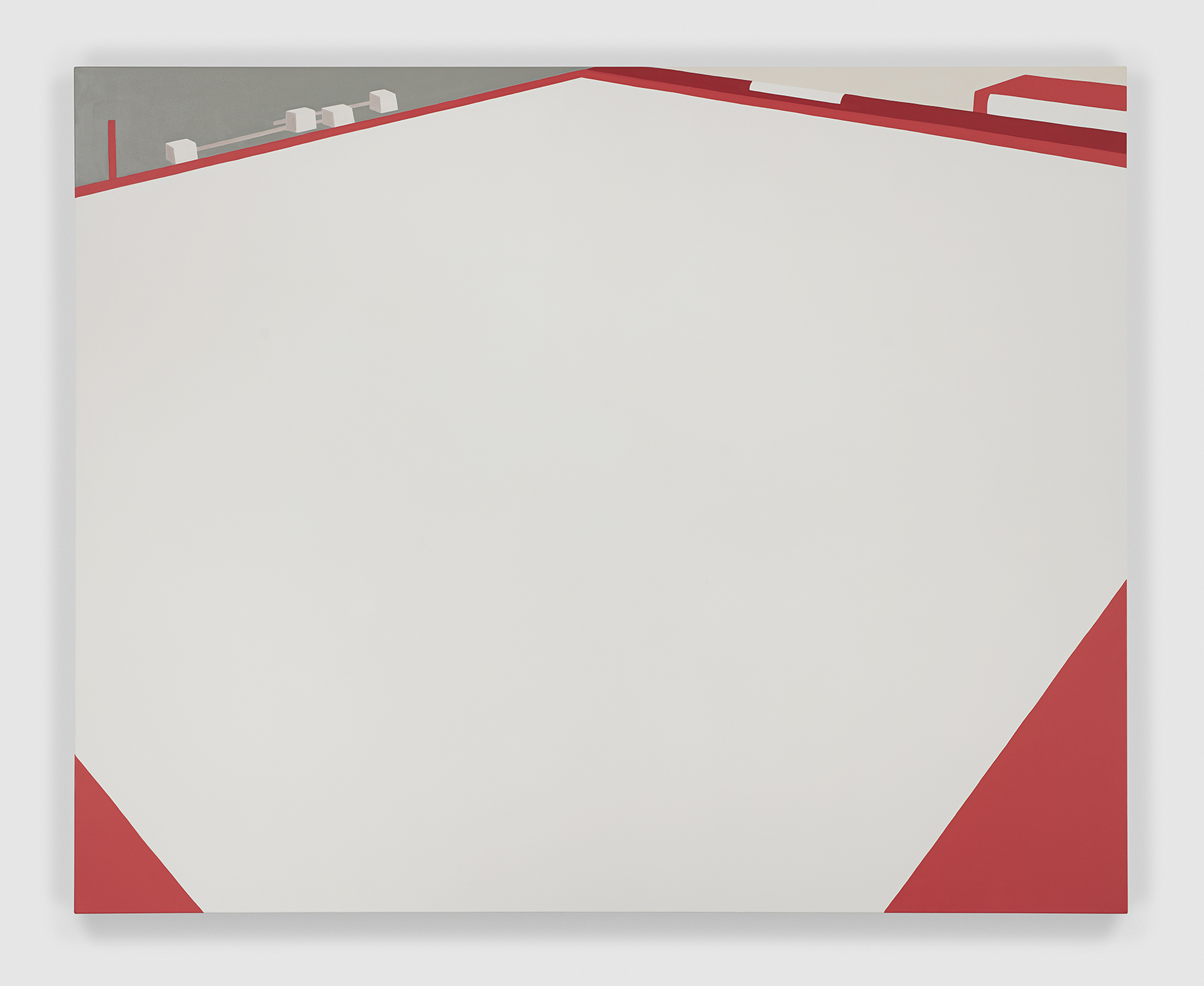
Spring Floor VI; 2020.
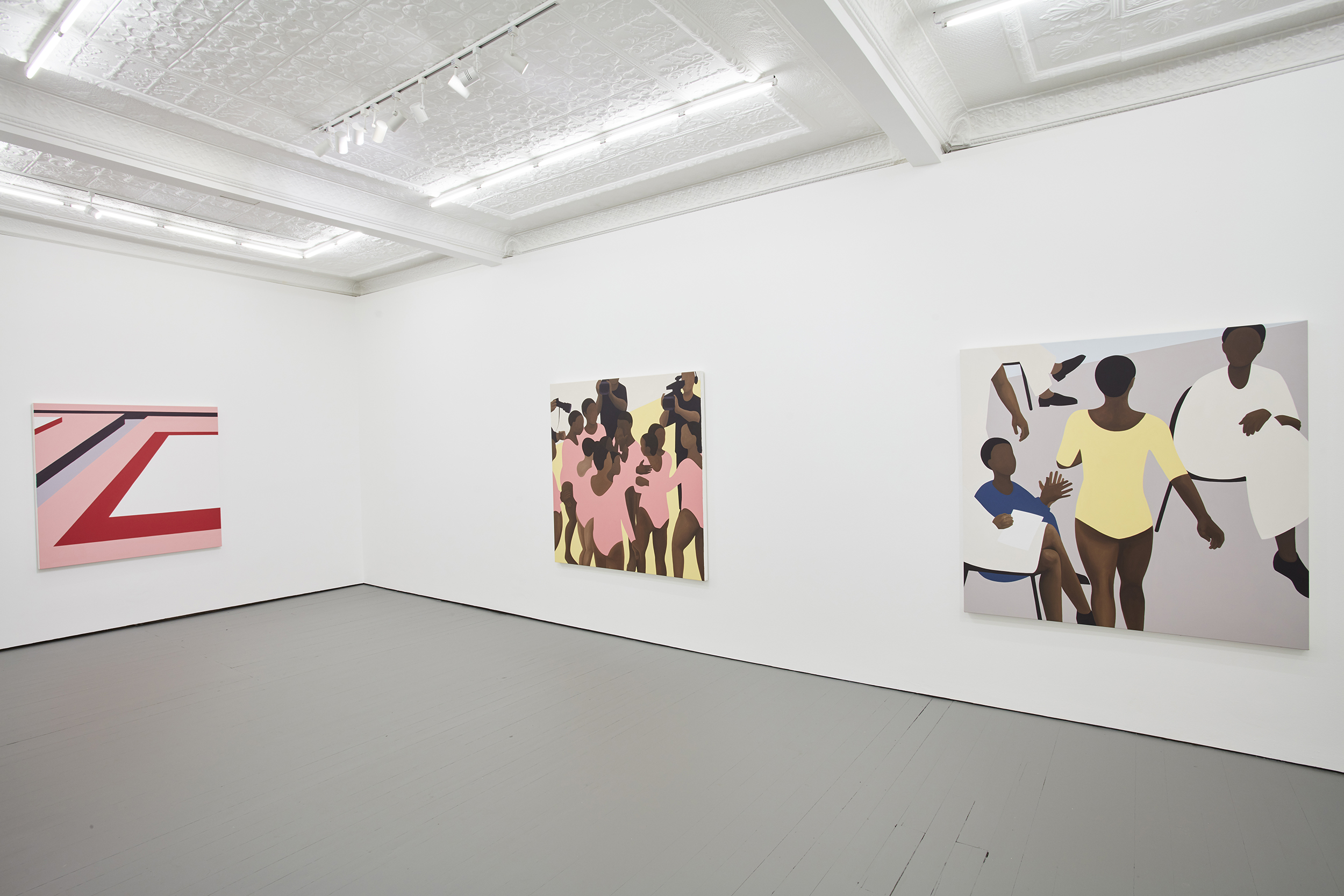
Gallery installation view



















































